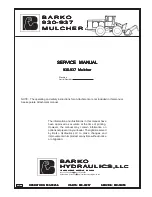
Chapter 5: Accessory Equipment--Stirrer
5 - 3
11)
Reassemble the connector, using the longer screw to hold the two sides of the connector together.
Using the Heating Jackets
Always use the heating jacket with a closed-loop temperature-control system. Never plug it directly into an AC
wall output: It is too easy to become distracted and walk away from your cell, which can quickly overheat.
Installation of the heating jacket on the cell is described in Chapter 4.
Always turn off the temperature controller attached to the heating jacket before the jacket is removed from the
cell and/or the cell is emptied.
The heating jacket is not designed for operation when wet. Make sure that the jacket does not come in contact
with water or electrolyte.
Be careful to avoid contact with the heating jacket when it is powered. The exterior surface of the jacket can
become very hot.
Stirrer
P/N 990-00117 is a stirring-rod kit. It can be used with a variety of stirring motors. The stirring rod kit includes:
•
A precision 10 mm glass stirring rod (P/N 930-00020)
•
A stirring paddle for attachment to the rod (P/N 935-00024)
•
A bushing that guides the stirring rod through a 24/40 ground-glass port (P/N 930-00019)
Installation of this stirring-rod kit into the cell was discussed in Chapter 4.
Many labs already own a stirring motor and controller that can be used with the stirring rod kit. A flexible
connection between the rod and the motor is recommended. Make sure that the stirring rate does not exceed
200 rpm.
Warning:
Painful burns can result from touching the jacket when it is under power.
Warning:
Never operate the heating jacket when it is wet. Allow the jacket to dry
thoroughly if it does become wet.
Caution:
The heating jacket must only be powered when it is attached to a cell filled with a
liquid above the level of the jacket. Operation without a filled cell can damage the heating jacket and/or
temperature controller.
Summary of Contents for FlexCell
Page 1: ...Flexcell Cell Kit Operator s Manual...
Page 8: ...Checking for Shipping Damage 1 2...
Page 10: ...Chapter 2 Metal Specimens Checking for Shipping Damage 2 2...
Page 30: ...Chapter 4 Routine Use of the Flexcell Electrode Area 4 10...
Page 36: ...Chapter 6 Troubleshooting Poor experimental reproducibility 6 2...








































